
The United States Army Pacific (USARPAC) is an Army Service Component Command which serves as the Army service component for United States Indo-Pacific Command. It may also serve as a Joint Task Force headquarters. The command has forces in Alaska, Hawaii, Japan, and South Korea. It also performs missions in Southeast Asia, in the countries stretching from the Philippines all the way to Bangladesh and India. United States Forces Korea (USFK) has had operational command and control of US Forces in Korea since January 2012, and USARPAC headquarters oversees the manning, training, and equipping of US Army forces assigned to USFK.

The 102nd Infantry Division ("Ozark") was a unit of the United States Army in World War II. The unit is currently active as the 102nd Training Division (Maneuver Support).

The 9th Infantry Regiment ("Manchu") is a parent infantry regiment of the United States Army.

The 14th Infantry Regiment is a United States Army light infantry regiment. It has served in the American Civil War, Boxer Rebellion, World War II, Korean War, Vietnam War, Operation Restore Hope, Operation Uphold Democracy, Operation Joint Guard, Operation Desert Storm, Operation Enduring Freedom, Operation Gothic Serpent, Operation New Dawn, Operation Resolute Support,Operation Iraqi Freedom, and Operation Inherent Resolve. The 14th Infantry Regiment did not take part in combat during World War I. It has also conducted peacekeeping and humanitarian missions in the Sinai Peninsula, Guantánamo Bay in Cuba, Bosnia, and Kosovo.

The 11th Corps Signal Brigade of the United States Army is an element of Army Forces Command. It is based at Fort Cavazos, Texas. The unit mascot is the Thunderbird, a hawk-like bird perched upon a globe shooting thunderbolts out of its eyes. Soldiers in this unit call themselves "The Thunderbirds."
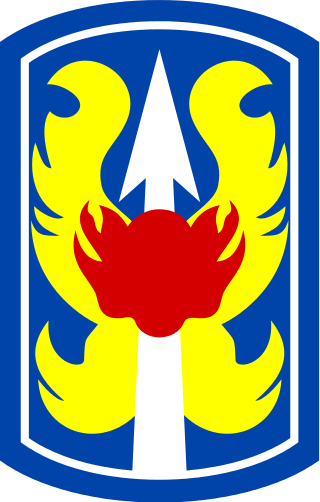
The 199th Infantry Brigade (Light) is a unit of the United States Army which served in the Army Reserve from 1921 to 1940, in the active army from 1966 to 1970 (serving in the Vietnam War), briefly in 1991–1992 at Fort Lewis, and from 2007 as an active army training formation at Fort Moore.

II Field Force, Vietnam was a United States Army Corps-level command during the Vietnam War.

The 35th Corps Signal Brigade is a signal brigade in the United States Army. The brigade is based at Fort Liberty, North Carolina, and provides rapidly deployable force projection signal support, and rapid communications for Army, joint, and combined Operations. On 23 April 2007, the 35th Signal Brigade relocated to Fort Gordon, Georgia.

The 160th Signal Brigade is a communications formation of the United States Army, currently based at Camp Arifjan, Kuwait. It traces its history back to the end of the Second World War.
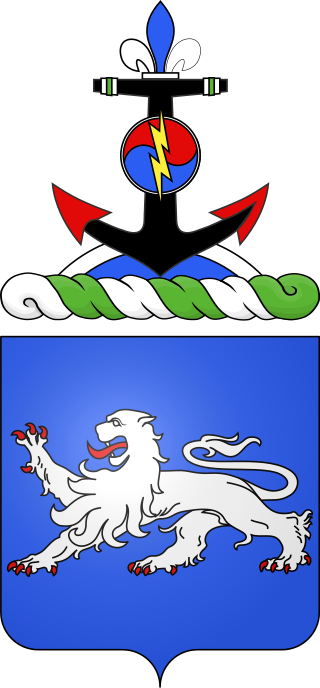
The 68th Armor Regiment is an armored regiment of the United States Army. It was first activated in 1933 in the Regular Army as the 68th Infantry Regiment.
The 25th Signal Battalion is a strategic signal battalion (SSB) of the United States Army. The battalion is one of two permanently assigned to the 160th Signal Brigade.

United States Army Network Enterprise Technology Command (NETCOM) is a US Military unit subordinate to United States Army Cyber Command. NETCOM's mission is to operate and defend the computer networks of the United States Army. The numerical command for NETCOM was 9th Army Signal Command, though this distinction was removed on 1 October 2011. Its heritage can be traced back to the creation of the 9th Service Company in 1918. The command headquarters is at Fort Huachuca, Arizona. Major General Jacqueline D. McPhail assumed command of NETCOM in August 2024.
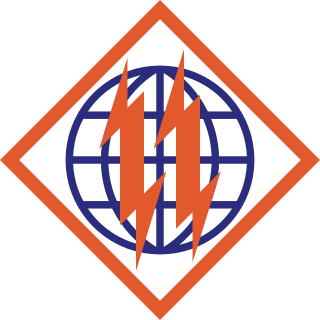
The 2nd Theater Signal Brigade is a military communications brigade of the United States Army subordinate to the Army Network Enterprise Technology Command with headquarters at Lucius D. Clay Kaserne, Germany.
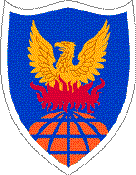
311th Signal Command Theater is the designated signal command for the Army Service Component Commands within the Pacific and Korean theaters. The staff of 311th Signal Command consists of more than 3000 active-duty soldiers, U.S. Army Reserve soldiers and Army civilians. Headquartered at Fort Shafter, Hawaii, the 311th SC(T) and its subordinate units are stationed across 16 time zones, ranging from Alaska to Korea, and from Hawaii to California.

The 327th Signal Battalion has a rich history within the United States Army. It was initially constituted on May 26, 1952, in the Organized Reserve Corps as the Headquarters and Headquarters Company, 327th Signal Support Battalion, and activated in Tampa, Florida, on June 30, 1952. Over the years, the battalion underwent several reorganizations and redesignations, notably becoming part of the Regular Army in 1967 and being activated at Fort Bragg, North Carolina. The battalion also includes the histories of the 416th and 221st Signal Companies, which were integrated into the battalion through reorganizations. The battalion's continuous adaptations reflect its commitment to providing signal support. It was eventually inactivated in April 2007 at Fort Bragg.

The 267th Chemical Company was a military unit of the U.S. Army Chemical Corps responsible for the surety of chemical warfare agents dubbed "RED HAT" deployed to the Islands of Okinawa, Japan and subsequently Johnston Atoll in the Pacific Ocean. A recently discovered Army document reveals that the true mission of the 267th Chemical Company was the operation of the Okinawa deployment site as part Project 112. Project 112 was a 1960s biological warfare field test program that was conducted by the Deseret Test Center. Okinawa is not listed as a test site under Project 112 by the U.S. Department of Defense.
The 109th Expeditionary Military Intelligence Battalion is an inactive military Intelligence battalion of the United States Army. Last headquartered at Joint Base Lewis–McChord, Washington, it was part of the 201st Expeditionary Military Intelligence Brigade under I Corps prior to its inactivation 12 May 2021. The Battalion's last commander was LTC Raven B. Stein.
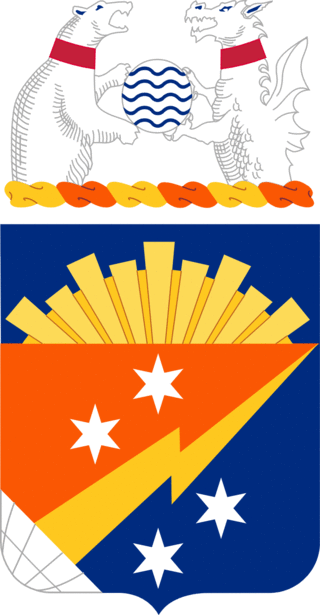
The 369th Signal Battalion is a United States Army Signal Battalion. It is organized under the 15th Regimental Signal Brigade at Fort Eisenhower, GA. As a US Army Training and Doctrine Command unit, it serves as one of two battalions which provide Advanced Individual Training (AIT) to United States Army Signal Corps recruits.
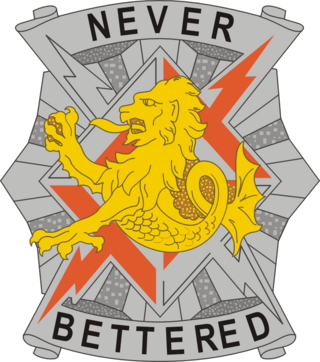
The 78th Signal Battalion is a strategic Signal Battalion subordinate to the 516th Signal Brigade and headquartered at Camp Zama, Japan. The battalion supports the United States Army Japan (USARJ). The battalion has four subordinate units - Headquarters and Headquarters Detachment (HHD), US Army Network Enterprise Center-Camp Zama, US Army Network Enterprise Center-Okinawa (Okinawa), and US Army Defense Satellite Communications System (DSCS) -Okinawa(Okinawa).

The 55th Support Battalion was a unit of the United States Army, which was last active from 9 July 1982 to 15 June 1991.


















